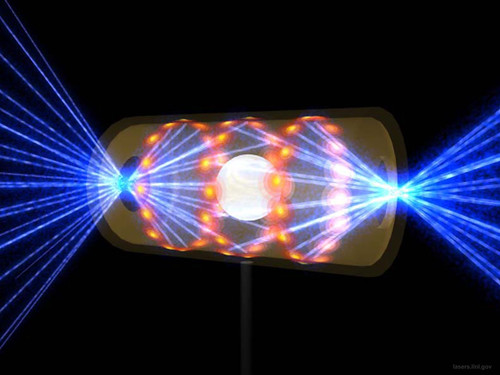Strung Out On A Lazer Harp: Q&A With Radium Audio
by Kevin Holmes
from http://www.thecreatorsproject.com/







Radium Audio are, an audio collective that plays around with sound. They create innovative sonic branding and audio design, always searching for that ever-elusive “sound that stirs emotion.” They have a sound lab in East London where they conduct their musical experiments, make instruments and create interactive designs. They recently notified us of their latest creation: a lazer harp that can control sound and stills. Seeing as how we’re big fans of lazers, the project naturally piqued our interest, so we emailed them to find out some more about this mystical new musical instrument.
The Creators Project: So, obvious question here… how come the lazer harp?
Radium Audio: It’s been on the table for quite a long time. We had often talked about building something beautiful and magical using two of our favorite things: lazers and sound. When we were invited to represent sound at the F5 motiongraphics event in NYC, we decided the time was right to finally get on and build one!
How does your lazer harp differ from other lazer harps?
We did an audit on existing lazer harps, from the first ones built in the 1970s by Geoff Rose and Tim Walsh, via Jean-Michelle Jarre and his followers, up to the modern ones described on internet DIY sites, and we found that all of them were basically showpieces and not designed as a serious musical instrument. They were all monophonic—ours is polyphonic with selectable scales. They were not ergonomically designed for smooth and fast playing, rather for stage show effects. Our design is based on ergonomics and how a player can move his hands in a comfortable way over the beams—like a guitar neck, actually. Our harp is also velocity-sensitive to allow the same dynamics as a traditional piano keyboard.
Can you briefly explain how you built it?
First we made a wood mock-up with strings as beams, testing out sizes and angles to get it right. Then we made a thorough list of features we wanted to put inside it and then the design evolved from that. We passed through a number of prototypes before we got to the design we’ve used.
You’ve said the lazer harp controls video and stills, how does this work?
The lazer harp is basically a MIDI keyboard. We are using the MIDI control signals to control graphics as well as sound. This is a feature of the performance software we have developed for internal use.
Radium Audio Lazer Harp from Kevin Holmes on Vimeo.
What other instruments are you building?
We are currently building a series of hand gesture controllers, some using lazer beams and some using invisible sensors like IR [infrared] and similar. We have also developed middleware that turns “nonartistic” devices—such as bar code readers for example—into controllers for sound and visuals. And we have a number of other solutions up our sleeve that we cannot talk about openly just yet :) Just wait and see.
How dramatically do you see musical instruments evolving over the next 5-10 years?
Imagine the time when humans started to understand how to use—shape and control—wood and the revolution coming from that in terms of instrument making, all the possibilities: guitars, drums, violins and more. Now, consider the fact that it took quite a while from that point in time until we were able to build things like the Stradivarius violins, although it was built from the same material.
We are now at the end of a period in time when electronics and micro-processors have emerged as a major tool in musical instrument design—samplers, synthesizers and much more are all around us. However, we are still waiting for the Stradivariuses. Honestly, there’s quite a lot of bad design going around in the musical instrument world, especially in software-based devices. So, we are moving into the next phase: developing really good designs. It probably means that there will be few new basic technologies but, hopefully, a lot of improvements on designs. We are still waiting for the electronic instruments that you can buy at the age of 17 and live with for a lifetime, still evolving and finding out new things when you are 75. You can do that with a violin, why not with an electronic instrument ?
All images courtesy of Radium Audio





















 OK, let's cut the crap here, NASA: After
OK, let's cut the crap here, NASA: After 

